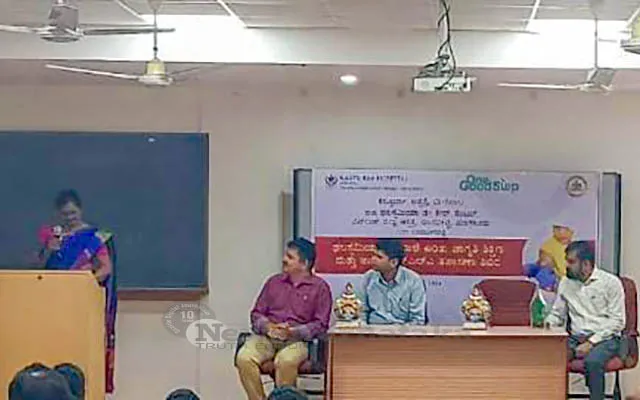New Delhi: Close on the heels of the Himalayan earthquakes that have ravaged Nepal has come a reminder that the rocks that make up the mountains once lay beneath an ocean and witnessed what scientists call “the mother of all extinctions”. Scientists have found in India’s Spiti Valley fresh geochemical signatures of a catastrophic event that wiped out over 80 per cent of species on earth about 252 million years ago.
Scientists have found in India’s Spiti Valley fresh geochemical signatures of a catastrophic event that wiped out over 80 per cent of species on earth about 252 million years ago.
Spiti Valley is located in the Himalaya in the northeast of Himachal Pradesh and was described by a geologist as “a museum with pages of earth’s history”.
Indian and American geologists who explored Spiti’s desert mountain terrain have studied fossils and chemical elements embedded in ancient rocks that they say corroborate suggestions made earlier that multiple upheavals with global impacts may have caused the mass extinction.
Scientists have known for decades that the planet lost 90 per cent of its marine species and 70 per cent of its terrestrial species in a relatively short period of time sandwiched between what geologists call the Permian (P) and the Triassic (Tr) eras.
This so-called PTr extinction was the most devastating of the five mass extinctions in the planet’s history, the last one occurring about 65 million years ago and linked to the end of the dinosaurs.
“The rocks in Spiti provide us the first detailed evidence from India for the abrupt and catastrophic environmental changes during the PTr extinction event,” said Asish Basu, a professor of geological sciences from the University of Rochester in the US who was part of the study team.
Basu and his colleagues have just published their findings in the journal Gondwana Research.
“Most evidence for the PTr extinction has come from the northern hemisphere lands -the signatures from Spiti are important because they come from a time when India was part of Gondwanaland, located far south of the equator,” said Nilotpal Ghosh, a geochemist at the University of Rochester and the first author of the study. “They help establish the global nature of the PTr event.”
Previous evidence for the PTr extinction came from studies on fossils and rocks in the Canadian Arctic, the southern Alps and China among other sites scattered across the world. Palaeontologists have long documented that fossils abundant in the late Permian went missing in the early Triassic.
“Many ideas had been proposed to explain this extinction – prolonged volcanic eruptions in Siberia, a large asteroid falling in Brazil, and rapid sea-level changes,” said research team member Arundeep Ahluwalia, a professor of geology at Panjab University, Chandigarh.
“For geologists, Spiti is a museum with pages of the earth’s history,” Ahluwalia told The Telegraph.
The scientists, funded by the Indian and American governments, conducted an expedition in 2009, driving and trekking across Spiti Valley over several weeks and studying rocks that had earlier been recognised as dating from the PTr boundary period.
At several sites, they observed a rapid drop in carbon isotope ratios in a thin layer of rock that appeared associated with the main pulse of Siberian volcanic eruptions that would have released large volumes of isotopically lighter, carbon-enriched carbon dioxide into the atmosphere.
The geo-chemical changes the team observed in Spiti could also have been triggered by what some scientists had earlier proposed as the trigger for the PTr extinction: a giant meteorite crash at a site called Araguainha in Brazil.
Two years ago, Eric Tohver, a geologist at the University of Western Australia, and his colleagues had calculated that the Araguainha asteroid may have hit the earth hard enough to trigger thousands of earthquakes of magnitudes 9.9 – more powerful than any ever recorded by seismologists.
The impact, scientists believe, could also have released an explosion of methane into the atmosphere, leading to global warming and killing marine and terrestrial species. The rocks in Spiti show chemical residues that would be expected under a methane-laced atmosphere.
“We also see evidence of changes in marine geochemistry and rapid changes in sea levels,” said Uma Kant Shukla, a geologist at Banaras Hindu University.
At the PTr boundary, he said, the rocks in Spiti were under an ancient ocean but were later brought up by the rise of the Himalaya.
Basu and his colleagues have suggested that the catastrophic conditions that contributed to the PTr extinction could have been “simultaneously triggered” by the after-effects of the Siberian volcanic eruptions and the asteroid impact in Brazil.
“The asteroid hit itself could have intensified the Siberian volcanism,” Ahluwalia said.
A team of US scientists has independently proposed a similar connection between an asteroid impact in Mexico and volcanic eruptions in India’s Deccan plateau. Both events occurred about 65 million years ago, spawning rival theories about what led to the extinction of the dinosaurs.
Geologist Mark Richards at the University of California, Berkeley, had calculated that the asteroid that fell in Mexico would have triggered a magnitude 11 earthquake. Richards and his colleagues have now proposed that the Mexico impact may have triggered a much more voluminous eruptive phase.
“Seismic waves from the impact were likely strong enough to have triggered eruptions from existing volcanoes worldwide, including the Deccan Traps,” Richards told this newspaper.
The precise trigger mechanisms are unclear, he said, but may have involved changes in permeability that would mobilise and facilitate a rapid rise and ascent of magma.
















